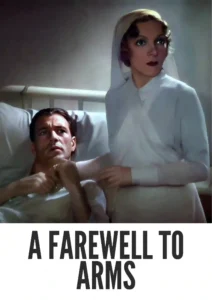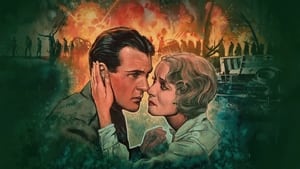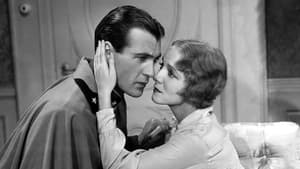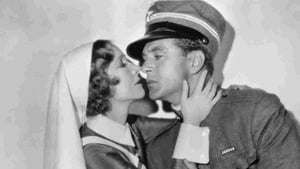Video Sources 0 Views
- Watch trailer
- A Farewell to Arms 1932 Colorized


Synopsis
Table of Contents
ToggleLove and Loss in Wartime Italy: A Farewell to Arms (1932) in Stunning Color

Step into the poignant world of A Farewell to Arms, a moving romance set against the backdrop of World War I Italy, now beautifully colorized for an immersive viewing experience. Starring Helen Hayes and Gary Cooper, this adaptation of Ernest Hemingway’s novel delivers a powerful story of love, loss, and the devastating effects of war. Perfect for fans of classic literature and historical romance, this HD download brings a timeless tale of human connection to life.
A Farewell to Arms Storyline: Love Amidst the Chaos of War
A Farewell to Arms tells the story of Frederic Henry (Gary Cooper), an American ambulance driver serving in the Italian Army during World War I. While stationed in Italy, he meets Catherine Barkley (Helen Hayes), a British nurse grieving the loss of her fiancé. Despite the chaos and destruction surrounding them, Frederic and Catherine find solace and love in each other’s arms.Their relationship deepens as they navigate the challenges of wartime, including injuries, separation, and the constant threat of death. They escape to Switzerland, seeking refuge from the war, but tragedy strikes when Catherine experiences complications during childbirth. Ultimately, A Farewell to Arms is a heartbreaking and unforgettable story about the resilience of love in the face of unimaginable adversity.
Movie Cast
The film features a stellar cast of actors who bring this emotional story to life:
- Helen Hayes as Catherine Barkley
- Gary Cooper as Frederic Henry
- Adolphe Menjou as Major Rinaldi
- Mary Philips as Helen Ferguson
- Jack La Rue as Priest
Movie Genre
A Farewell to Arms falls into the genre of tragic romance, with elements of war and drama that are characteristic of classic Hollywood productions. Its emotional depth and historical setting make it a captivating and engaging film.
Historical Context: Adapting Hemingway in Early Cinema
Released in 1932, A Farewell to Arms represents an early adaptation of Ernest Hemingway’s acclaimed novel, showcasing the challenges and triumphs of translating literary works to the silver screen. The film was produced during a period when Hollywood was exploring more mature and complex themes, reflecting the changing social and cultural landscape of the time. While adaptations often face scrutiny, A Farewell to Arms captures the essence of Hemingway’s story, offering a glimpse into the human cost of war and the enduring power of love.
Colorization Details
This colorized version of A Farewell to Arms has been meticulously restored using modern digital techniques, enhancing the visual appeal while preserving the film’s original atmosphere of romance and tragedy. The colorization process involved carefully analyzing the grayscale tones of the original black and white footage and assigning appropriate colors to each scene. While the specific software used remains proprietary, the techniques employed included advanced algorithms for color palette selection and image enhancement. This painstaking process brings new life to the characters and settings, making the story even more engaging for modern audiences. While some may debate the merits of colorizing classic films, it introduces these films to a broader audience, ensuring their legacy for future generations.
Technical Details
- Director: Frank Borzage
- Screenplay: Benjamin Glazer, Oliver H.P. Garrett
- Based on: the novel by Ernest Hemingway
- Cinematography: Victor Milner
- Edited by: Otho Lovering
- Production Company: Paramount Pictures
- Distributed by: Paramount Pictures
- Runtime: 89 minutes
Technical Specifications
- Download Format: MP4
- Resolution: HD (1080p)
- Compatibility: Compatible with most devices, including smartphones, tablets, computers, and smart TVs.
Reviews and Critical Reception
A Farewell to Arms (1932) is celebrated for its powerful performances, emotional depth, and stunning cinematography. The film was a commercial and critical success, earning Academy Awards for Best Cinematography and Best Sound, and was nominated for Best Picture and Best Art Direction. As a landmark adaptation of Hemingway’s novel, A Farewell to Arms remains a testament to the enduring power of classic Hollywood storytelling.
FAQs
- Q: What is A Farewell to Arms about?
- A: A Farewell to Arms is a tragic romance about an American ambulance driver and a British nurse who fall in love during World War I.
- Q: Is A Farewell to Arms (1932) a faithful adaptation of Hemingway’s novel?
- A: While adaptations often take liberties, A Farewell to Arms captures the essence of Hemingway’s story, offering a glimpse into the human cost of war and the enduring power of love.
- Q: Is this version of A Farewell to Arms colorized?
- A: Yes, this version has been professionally colorized to enhance the viewing experience.
- Q: What makes A Farewell to Arms a classic?
- A: A Farewell to Arms is celebrated for its powerful performances, emotional depth, and stunning cinematography, earning Academy Awards and critical acclaim.
- Q: What is the download format?
- A: The download format is MP4, which is compatible with most devices.
- Q: What resolution is the download?
- A: The resolution is HD (1080p), providing a high-quality viewing experience.
Download Now in HD!
Watch A Farewell to Arms Today!














